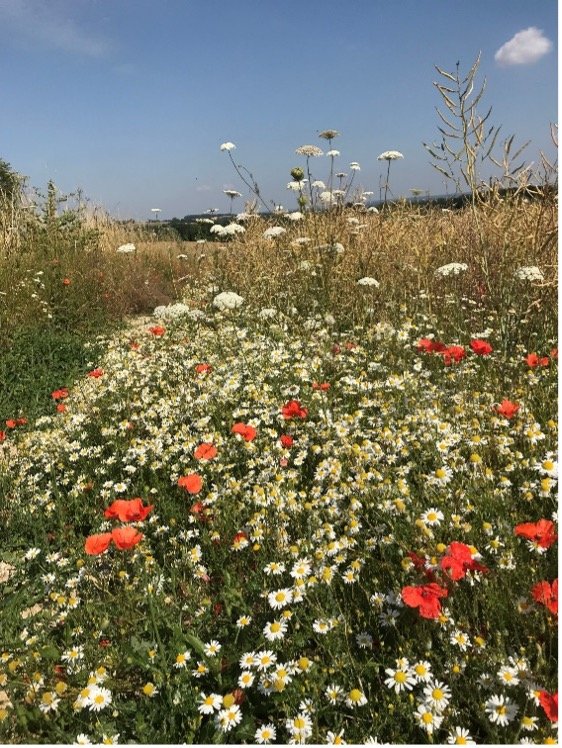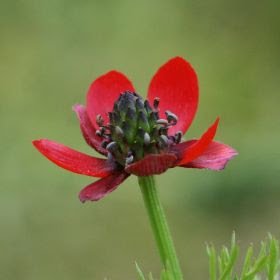
Biodiversity in the Farmed Landscape
Field Margins and Hedgerows
Uptake of Countryside Stewardship is strong across the group which in turn is leading to a significant increase in the proportion of hedgerows and field margins managed for nature. Whilst there is still more to be done we are seeing an increase in populations of butterflies such as the Marbled White, the Brown Argus and the Common Blue and we also look forward to a return of species such as the Brown Hairstreak as our hedgerows grow out.
Rare Arable Plants
The northern part of our area is nationally recognised for its vulnerable, rare arable plants. These plants were introduced to this country in the Roman and pre-Roman periods and have survived for many centuries, but are now threatened by modern farming practices. Many are quite distinctive – appearing in vivid colours reflecting their Mediterranean/Middle Eastern origins. We have attempted to address these threats by setting aside cultivated margins that are left unsown and unsprayed, so that rare arable plants, like Dwarf Spurge, Prickly Poppy, Pheasant’s Eye, Night-flowering Catchfly and Venus’-looking-glass, can flower and set seed.
Pheasant's-eye, Adonis annua
The Barn Owl Project
Inspired by Matt Stevens of the Hawk Conservancy Trust we have re-kindled our interest in encouraging Barn Owl populations by increasing the number of Barn Owl boxes on our farms and extending rough grassy field margins as hunting grounds for mice and voles.
Our Projects
Our group is working with the Wessex Rivers Trust, The Piscatorial Society and The Test & Itchen Association on several projects aimed to improve the ecological status of our rivers
River restoration
Uptake of Countryside Stewardship is strong across the group which in turn is leading to a significant increase in the proportion of hedgerows and field margins managed for nature.
Biodiversity in the farmed landscape
Following the example of others there is growing interest in linking fragments of chalk grassland between neighbouring farms, particularly on the steep scarp slopes of the downs.







